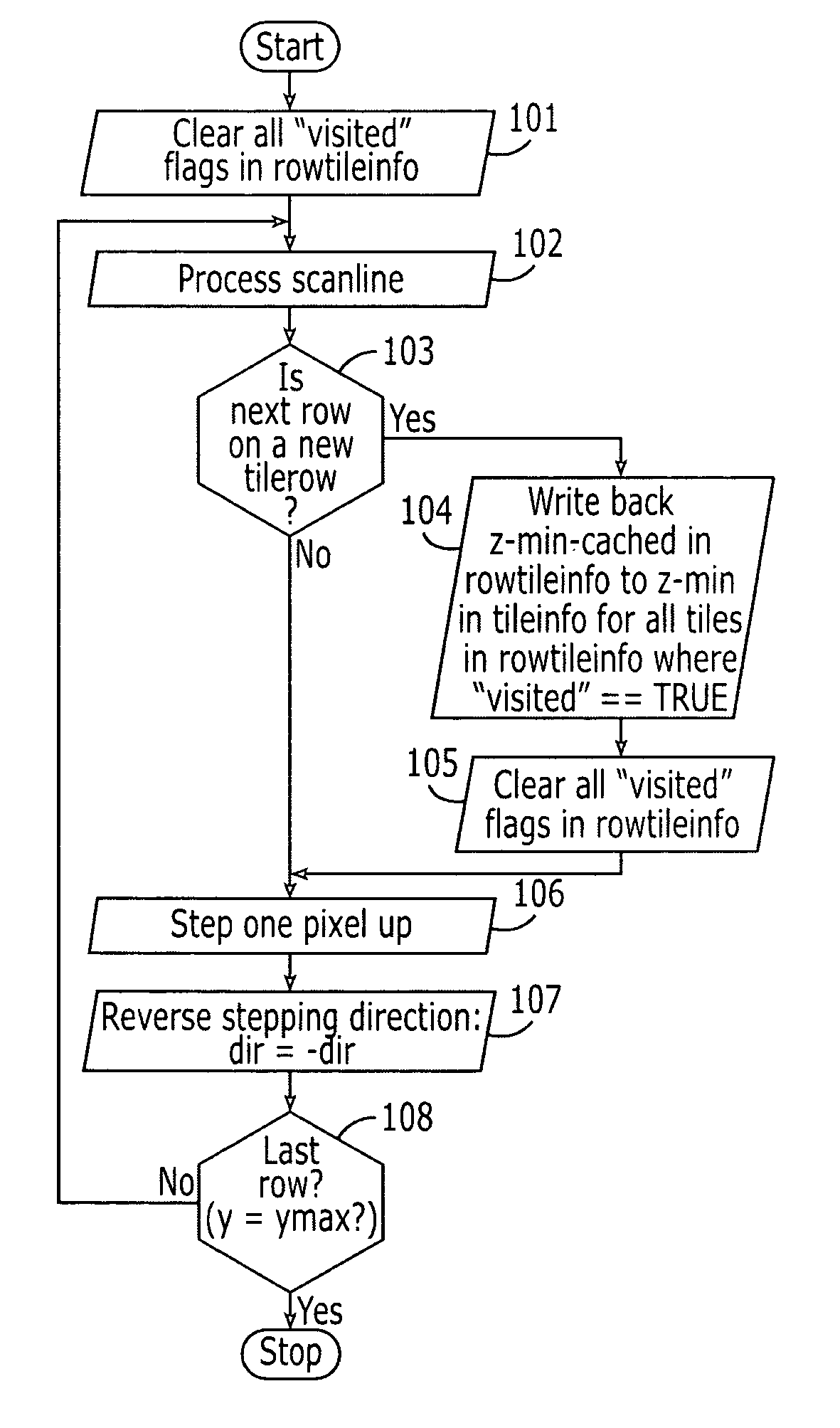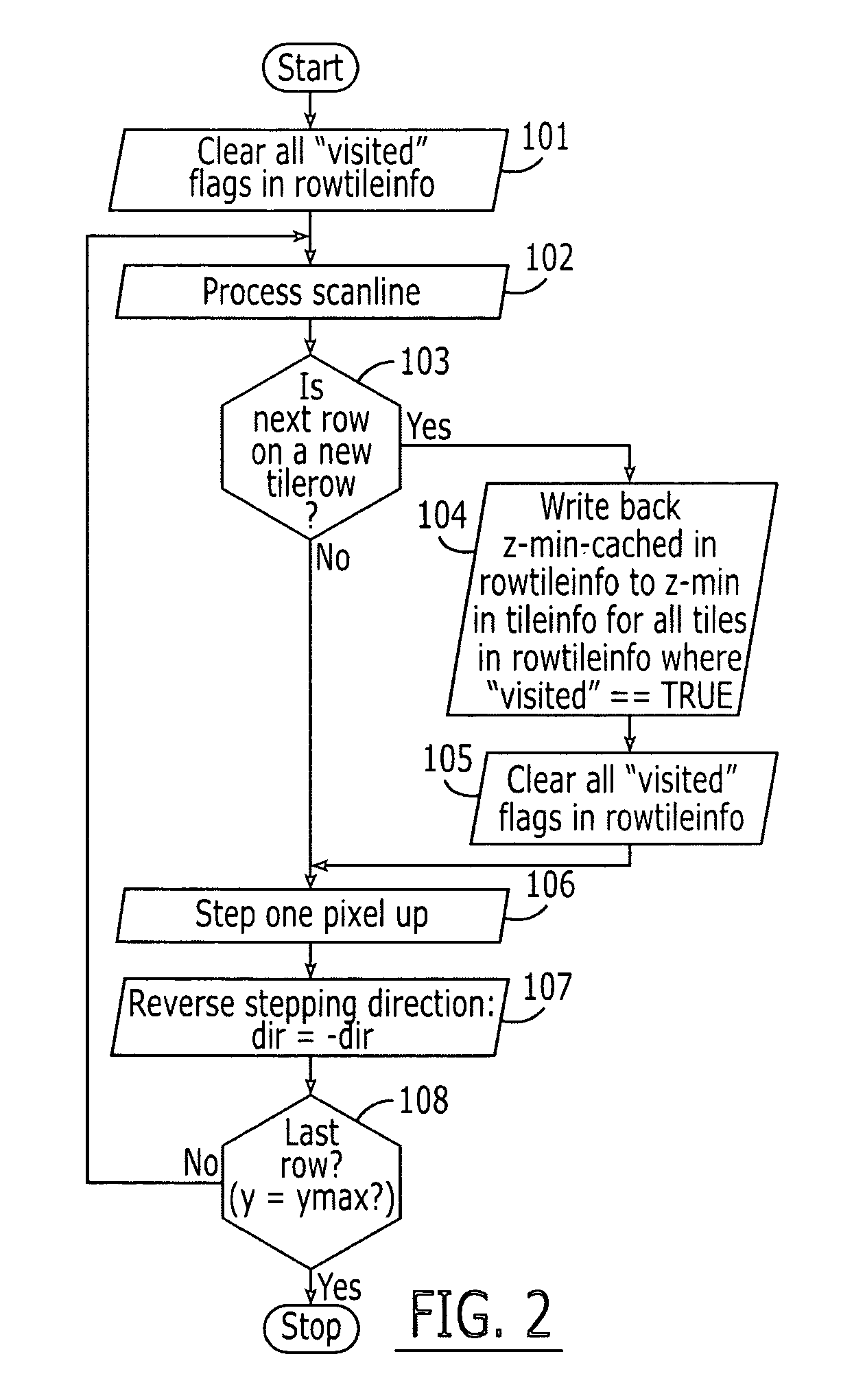Graphics processing apparatus, methods and computer program products using minimum-depth occlusion culling and zig-zag traversal
a graphic processing and minimum-depth culling technology, applied in the field of computer graphics, can solve the problems of small display, small amount of rendering resources, and limited rendering types, and achieve the effect of reducing the frequency of reading
- Summary
- Abstract
- Description
- Claims
- Application Information
AI Technical Summary
Benefits of technology
Problems solved by technology
Method used
Image
Examples
Embodiment Construction
[0038]The present invention will now be described more fully with reference to the accompanying drawings, in which exemplary embodiments of the present invention are shown. These embodiments are provided so that this application will be thorough and complete. Like numbers refer to like elements throughout.
[0039]Some exemplary embodiments of the present invention described below with reference to FIGS. 2-6 can extend the Pineda zigzag traversal method in three new ways:
[0040]1) The z-buffer can be divided into non-overlapping tiles of, e.g., 8×8 pixels.
[0041]2) We can have a memory in the system called tileinfo (previously called “aggregate tile occlusion information memory”), where information about the tiles is stored. For each tile, we can store a z-min variable that can hold the minimum value of all the z-values in the tile. For instance, if the screen resolution is 176×144, and the tile size is 8×8, then the number of tiles is 176 / 8×144 / 8=22×18=396. Thus tileinfo must be able to...
PUM
 Login to View More
Login to View More Abstract
Description
Claims
Application Information
 Login to View More
Login to View More - R&D
- Intellectual Property
- Life Sciences
- Materials
- Tech Scout
- Unparalleled Data Quality
- Higher Quality Content
- 60% Fewer Hallucinations
Browse by: Latest US Patents, China's latest patents, Technical Efficacy Thesaurus, Application Domain, Technology Topic, Popular Technical Reports.
© 2025 PatSnap. All rights reserved.Legal|Privacy policy|Modern Slavery Act Transparency Statement|Sitemap|About US| Contact US: help@patsnap.com



